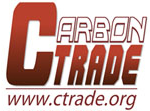A1.1 Air Quality Regulatory Challenges for Power Generators in 2011
John Kinsman, Senior Director Environment, Edison Electric Institute
This presentation will address air quality legislative and regulatory challenges for electric power generators in 2011, focusing upon NAAQS, hazardous air pollutants and greenhouse gases.
.
A1.2 Clean Air Act Aback
Peter Belmonte, Partner, ERM
Now that EPA propsed the Transport Rule to replace the vacated CAIR rule what will this mean for the utility industry in the future? In addition, with revised NAAQS for CO, NOx and SO2, how will the utility industry manage these tougher limitations? Does it make sense to retrofit coal fired units with Natural Gas? Is this going to make utilities greener from a GHG perspective? Will the tailoring rule have an impact as title V permits are renewed? We will explore these factors during this presentation and what the power industry can expect to moving forward.
.
A1.3 Compliance Challenges from the New 1-Hour National Ambient Air Quality Standards
Erwin Prater, Analyst, Sargent & Lundy, LLC and David Helm
The U.S. EPA recently published new National Ambient Air Quality Standards (NAAQS) for 1-hour NO2 (100 ppb) and 1-hour SO2 (75 ppb). These are the first 1-hour NAAQS for SO2 and NO2 that the EPA has ever established. The new NO2 standard compliments an existing annual NO2 standard, and the new SO2 standard replaces 24-hour and annual standards. Designation of non-attainment areas and formal implementation of the new standards is expected during the next few years. Starting immediately, new major emission sources that apply for air construction permits must demonstrate compliance with the new standards using air dispersion modeling techniques that have not previously been used. The new standards are considered very stringent, and power plant equipment that complied with the old NO2 and SO2 standards may have compliance issues arising from the new standards. This paper describes potential compliance issues and possible strategies for demonstrating and maintaining compliance, based on recent modeling and permitting experience with the new NO2 and SO2 NAAQS.
.
A1.4 BACT for GHGs — Cutting Legal Issues
Paul Gutermann, Partner and Head of Climate Change Practice, Akin Gump Strauss Hauer & Feld LLP
As EPA moves inexorably toward the regulation of GHGs under the Clean Air Act, companies need to consider what technologies EPA will impose to limit GHG emissions. To the extent EPA relies on historical permitting practices, what are the likely outcomes for major emitters? Is EPA changing the BACT decision paradigm to result in different outcomes? These and other cutting legal issues must be at the forefront of a company’s regulatory planning.
.
A1.5 Utility Perspectives on the Transport Rule
Daniel Chartier, Director Environmental Markets and Air Quality Programs, Edison Electric Institute
This presentation will provide an update from the perspective of the investor-owned electric utility industry on the regulatory and legislative landscape it faces with an emphasis on interstate transport and multi-emissions policy related to NOx and SO2 emissions. The author will focus on impacts of the proposed Clean Air Transport Rule and review concerns raised by the electric sector in response to this rulemaking; and will review the impacts of active legislative proposals, such as the multi-emissions bill proposed by Senator Carper.
